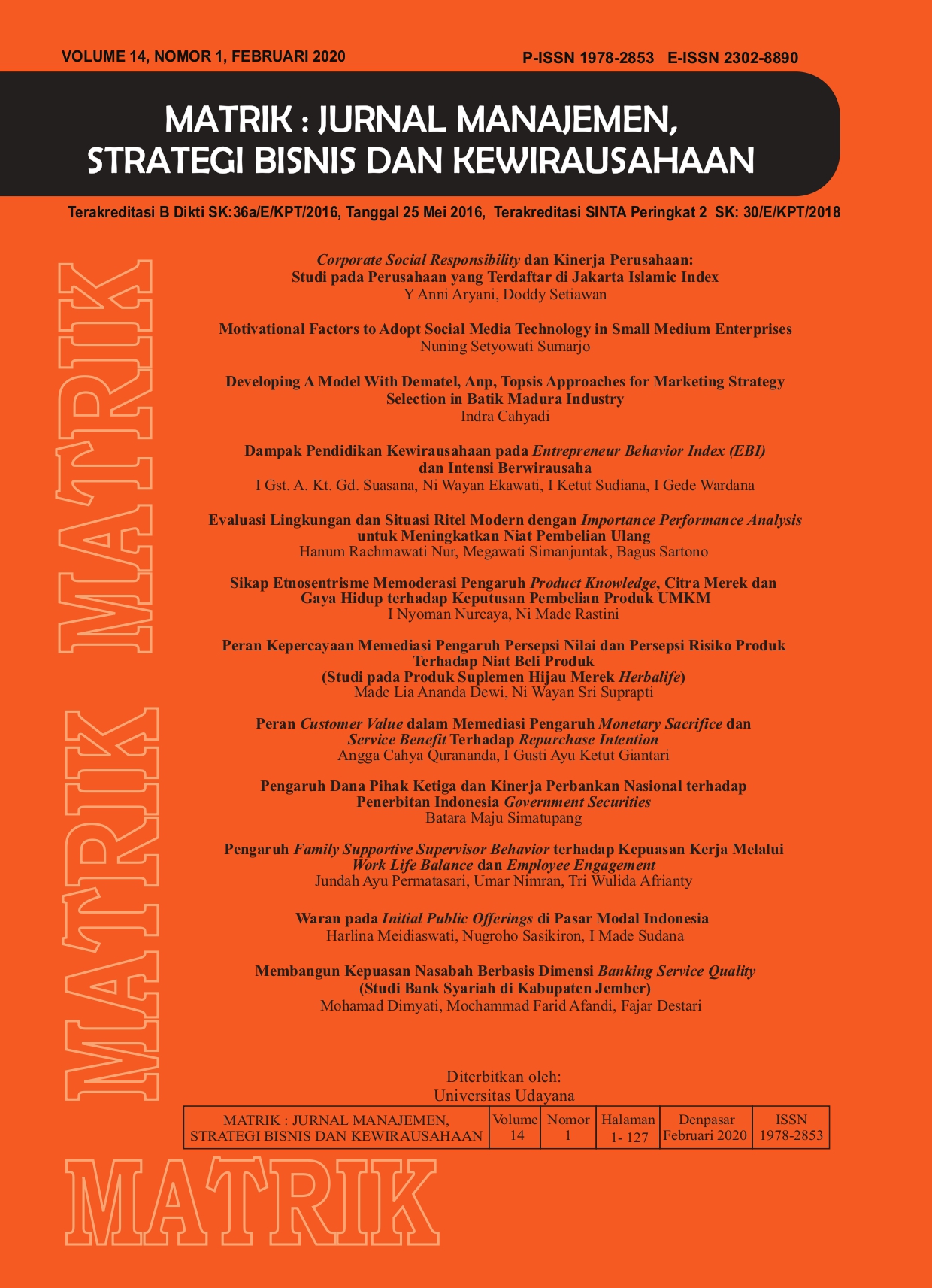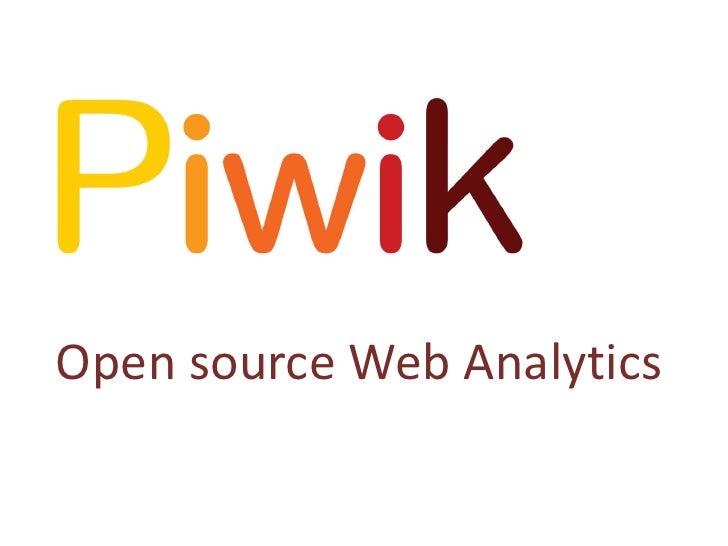Motivational Factors to Adopt Social Media Technology in Small Medium Enterprises
Abstract
Social media technology has become part of the community needs, not only as a means to socialize but also to support business operations. In the MEA era, the demands of the market expansion of business networks become mandatory for employers, including for SMEs. This study aim to analyze the motivational factors of SMEs to use social media technologies to support their business activities. This study used survey technique and analysis of Structural Equation Modeling with PLS analysis tools. The results showed that perceived enjoyment have positive effect on the perceived ease of use of social media technology, Perceived ease of use have positive effect toward the perceived usefulness, perceived enjoyment and perceived ease of use have positive effect to attitudes towards the use of social media technology, Perceived usefulness and attitude towards the use of social media technology have positive effect toward the intention of using social media technology.
Downloads
References
Assaad,Waad and Gomez, J.Marx.2011. International Journal of Managing Public Sector Information and Communication Technologies (IJMPICT) .(2) 1, September 2011
Brown, I. and Licker, P. (2003), “Exploring differences in internet adoption and usage between historically advantaged and disadvantaged groups in South Africa”, Journal of Global Information Technology Management, (6) 4:6-26.
Bruner, G.C. II and Kumar, A. (2005), “Explaining consumer acceptance of handheld internet devices”, Journal of Business Research, (58) 5:553-8.
Cooper, Donald R. dan Schindler, P. 2006. Business Research Methods. 9th ed. Singapore : McGraw-Hill.
Dabholkar, P.A. and Bagozzi, R.P. (2002), “An attitudinal model of technology-based self-service: moderating effects of consumer traits and situational factors”, Journal of the Academy of Marketing Science, (30)3:184-201
Davis, F.D., Bagozzi, R.P. and Warshaw, P.R. (1992), “Extrinsic and intrinsic motivation to use computers in the workplace”. Journal of Applied Social Psychology, (22)14:1111-32.
Ghozali, I. (2006). Analisis Multivariate Dengan program SPSS,3th ed, Semarang, Badan Penerbit Universitas Diponegoro
Hair, et al., (2006), Multivariate Data Analysis: Six Edition, Pearson International Edition.
Hartono, J.M. (2007). Behaviour Information Sistem. Andi Offset,Yogyakarta.
Hu, L. and Bentler, P.M. (1999), “Cutoff criteria for fit indexes in covariance structure analysis: conventional criteria versus new alternatives”. Structural Equation Modeling, (6)1: 1-55.
Huang, Jen-Hung; Lin, Yu-Ru and Chuang, Shu-Ting, 2006. Elucidating user behavior of mobile learning A perspective of the extended technology acceptance model. The Electronic Library, (25)5:585-598
J.Rowley. (2001). “Remodeling marketing communications in an Internet environment”. Internet Research, Electronic Networking: Applications and Policy,(11) 3:203-212.
Ko, D.G, Laurie J. Kirsch, William R. King. (2005). Antecedents Of Knowledge Transfer From Consultants To Clients In Enterprise System Implementations. MIS Quarterly, (29:1). 59-e5
Lou,H ,Luo,W and Strong,2001. Perceived critical mass effect on groupware acceptance. European Journal of Information Sistem,(9) 2:91-103
Maduku, D. K. (2016). Determinant of mobile marketing adoption among South African SMEs unpublished doctoral thesis. Johannesburg: University of Johannesburg.
R.R.Ruckman.http://www.imgrind.com/10-advantages-of-internet-marketing/10 Advantages Of Internet Marketing, (2012) January 19.
Sekaran, U, 2006. Research Methods For Business, Edisi 4, Buku 2, Jakarta: Salemba Empat.
Setyowati, N., Sulistyo, M.E . 2014. Study On The Implementation Of E-Business Measures For Micro And Small Medium Enterpheses. Jurnal Bisnis & manajemen, (15) 1:43-49 UNPAD. 2442 – 4617
Tero Pikkarainen, Kari Pikkarainen, Heikki Karjaluoto and Seppo Pahnila. 2004. Consumer acceptance of online banking: an extension of the technology acceptance model. Internet Research (14)3:224–235
Venkatesh, V. (1999). Creating favorable user persepcions: exploring the role of intrinsic motivation. MIS Quarterly, (23)2:239-260
Venkatesh, V. (2000), “Determinants of perceived ease of use: integrating control, intrinsic motivation, and emotion into the technology acceptance model”. Information Systems Research, (11) 4:342-65
Venkatesh, V dan Morris, M.G, (2000). Why don’t’men ever stop to ask for direction;gender, social influence and their role in technology acceptance and usage behaviour. MIS Quarterly, (24)1:115-139
Wirartha,M (2006). Economic Socio Research Method. Andi Offset. Yogyakarta
Yi, M.Y. and Hwang, Y. (2003), “Predicting the use of web-based information systems: self-efficacy, enjoyment, learning goal orientation, and the technology acceptance model”. International Journal of Human-Computer Studies, (59) 431-49
Yu, J., Ha, I., Choi, M. and Rho, J. (2005), “Extending the TAM for a t-commerce”. Information & Management, (42) 7:965-76.
 This work is licensed under a Creative Commons Attribution-ShareAlike 4.0 International License.
This work is licensed under a Creative Commons Attribution-ShareAlike 4.0 International License.

















